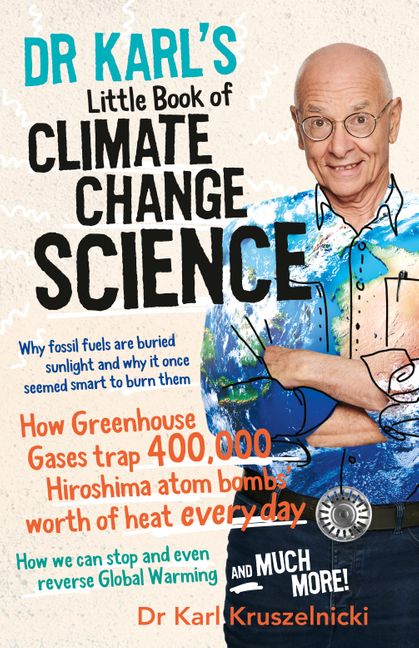Report on the Intensifying Heat Wave and Its Link to Climate Change
Overview of the Heat Wave Impact
An extensive heat wave is currently affecting approximately 150 million people across the United States, spanning from Wisconsin to Washington, DC. This event exhibits clear indicators of human-induced global warming, posing significant risks to public health and infrastructure.
Record-Breaking Temperature Trends
- Hundreds of daily temperature records are at risk of being broken, especially along the East Coast.
- All-time June high temperature records may be tied or surpassed.
- Overnight low temperatures are reaching record warm milestones, exacerbating health risks due to the urban heat island effect.
Global Context and Climate Change Attribution
The US heat wave coincides with extreme temperatures in Western Europe, an event intensified by global warming. Among extreme weather phenomena such as droughts, floods, and hurricanes, heat waves are most reliably linked to climate change caused by fossil fuel pollution.
Scientific Understanding and Climate Attribution
According to climate scientist Fredi Otto, the mechanism by which increased greenhouse gases cause hotter and more frequent heat waves is well understood. Every current heat wave is hotter than it would be without human-induced climate change.
Future Projections and Historical Context
- Current heat waves occur within a context of 1.2°C global warming, with expectations of more severe events as temperatures rise.
- Research shows some heat waves would have been impossible without global warming, while others have become tens to hundreds of times more likely.
- Examples include the Pacific Northwest heat wave (2021), Siberian heat wave (2020), and UK heat wave (2022).
Characteristics of Modern Heat Waves
- Heat waves are becoming more frequent, intense, and longer-lasting.
- They occur earlier and later in the warm season and are increasingly humid, increasing danger.
- Simultaneous heat waves on different continents are becoming more common.
Case Study: UK Heat Wave Analysis
A rapid scientific analysis indicates the recent UK heat wave, with temperatures reaching 92°F in Surrey, was 100 times more likely due to current climate conditions compared to pre-industrial times. Three consecutive days above 82°F in southeastern England are now about 100 times more probable than before global warming.
Public Health and Safety Concerns in the US
- Heat waves are the deadliest extreme weather in the US.
- The current heat wave is the first of the season, with temperatures near or above 100°F along the Amtrak Acela corridor.
- Heat indices may reach 110°F or higher, posing severe risks for outdoor activities and public health.
- Lack of overnight cooling increases health threats.
Impact on Society and Environment
Human-induced climate change significantly burdens societies, causing thousands of premature deaths, straining infrastructure, and harming ecosystems. Extreme heat leads to agricultural losses and reduced productivity.
Limitations of Climate Models
- Current computer models underestimate the trends of extreme heat.
- Projections for future heat extremes are likely conservative.
- Factors include changes in aerosols and weather patterns influenced by climate change.
- Research by Michael Mann highlights underprediction of persistent heat domes by climate models.
Emphasis on Sustainable Development Goals (SDGs)
SDG 3: Good Health and Well-being
The increasing frequency and intensity of heat waves threaten human health by causing heat-related illnesses and deaths. Addressing climate change is vital to reducing these health risks.
SDG 13: Climate Action
Mitigating fossil fuel pollution and implementing climate policies are critical to limiting global warming and reducing the occurrence of extreme heat events.
SDG 11: Sustainable Cities and Communities
Urban heat island effects exacerbate heat wave impacts in cities. Sustainable urban planning and green infrastructure can help mitigate these effects and protect vulnerable populations.
SDG 2: Zero Hunger
Extreme heat adversely affects agriculture, leading to crop losses and food insecurity. Climate adaptation strategies are necessary to safeguard food production.
SDG 9: Industry, Innovation, and Infrastructure
Heat waves strain infrastructure systems. Investing in resilient infrastructure and innovative solutions is essential to cope with increasing climate risks.
Conclusion
The current heat wave in the United States and concurrent events globally underscore the urgent need for comprehensive climate action aligned with the Sustainable Development Goals. Addressing the root causes of climate change and enhancing adaptive capacities will be crucial to safeguarding health, ecosystems, and economies against the growing threat of extreme heat.
1. Sustainable Development Goals (SDGs) Addressed or Connected
-
SDG 3: Good Health and Well-being
- The article discusses the health consequences of heat waves, including premature deaths and public health threats due to extreme heat.
-
SDG 13: Climate Action
- The article extensively covers climate change, global warming, and their role in increasing the frequency and intensity of heat waves.
- It highlights the human-induced causes of climate change and the need for mitigation and adaptation.
-
SDG 11: Sustainable Cities and Communities
- The article mentions the urban heat island effect, which exacerbates heat impacts in cities, affecting urban populations.
-
SDG 2: Zero Hunger
- Reference to agricultural losses and loss in productivity due to extreme heat links to food security and sustainable agriculture.
2. Specific Targets Under Those SDGs Identified
-
SDG 3: Good Health and Well-being
- Target 3.9: Reduce the number of deaths and illnesses from hazardous chemicals and air, water and soil pollution and contamination.
- Target 3.d: Strengthen the capacity of all countries for early warning, risk reduction and management of national and global health risks.
-
SDG 13: Climate Action
- Target 13.1: Strengthen resilience and adaptive capacity to climate-related hazards and natural disasters in all countries.
- Target 13.2: Integrate climate change measures into national policies, strategies and planning.
- Target 13.3: Improve education, awareness-raising and human and institutional capacity on climate change mitigation, adaptation, impact reduction and early warning.
-
SDG 11: Sustainable Cities and Communities
- Target 11.6: Reduce the adverse per capita environmental impact of cities, including by paying special attention to air quality and municipal and other waste management.
- Target 11.b: Increase the number of cities and human settlements adopting and implementing integrated policies and plans towards inclusion, resource efficiency, mitigation and adaptation to climate change.
-
SDG 2: Zero Hunger
- Target 2.4: Ensure sustainable food production systems and implement resilient agricultural practices that increase productivity and production, help maintain ecosystems, and strengthen capacity for adaptation to climate change.
3. Indicators Mentioned or Implied to Measure Progress
-
Indicators related to SDG 3
- Number of premature deaths attributed to heat waves and extreme heat events.
- Incidence of heat-related illnesses and health emergencies during heat waves.
-
Indicators related to SDG 13
- Frequency, duration, and intensity of heat waves and extreme temperature events.
- Global average temperature increase (e.g., 1.2 degrees Celsius warming mentioned).
- Probability changes of extreme heat events attributable to human-induced climate change.
- Number of countries with climate change adaptation and mitigation policies.
-
Indicators related to SDG 11
- Urban temperature measurements showing urban heat island effects.
- Air quality indices during heat waves.
- Implementation of urban climate resilience plans.
-
Indicators related to SDG 2
- Crop yield changes and agricultural productivity losses due to extreme heat.
- Number of agricultural systems adopting climate-resilient practices.
4. Table of SDGs, Targets, and Indicators
| SDGs | Targets | Indicators |
|---|---|---|
| SDG 3: Good Health and Well-being |
|
|
| SDG 13: Climate Action |
|
|
| SDG 11: Sustainable Cities and Communities |
|
|
| SDG 2: Zero Hunger |
|
|
Source: edition.cnn.com






